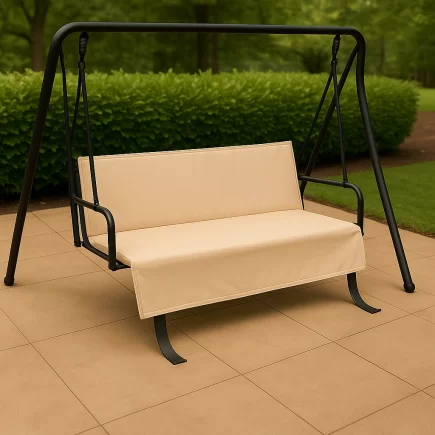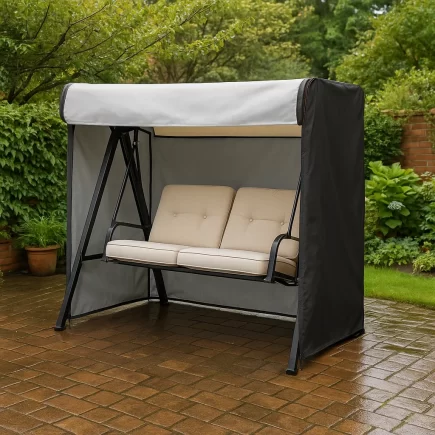Building a fire pit with bricks is one of the best ways to add charm and warmth to your outdoor space. Whether you’re planning cozy nights by the fire, entertaining guests, or just enhancing your backyard, a brick fire pit offers a durable, functional, and visually appealing solution.

In this guide, you will learn every step of the process, from selecting the right materials to ensuring your fire pit stands the test of time. Let’s dive in!
What You’ll Need to Build Your Brick Fire Pit
Now that you know why a brick fire pit is a great idea, let’s talk about what materials and tools you’ll need to bring your vision to life. Building a fire pit involves gathering the right materials and tools to ensure both functionality and safety.
Materials
- Fire-Resistant Bricks: These are the most important material for the fire pit. Fire-resistant bricks can withstand the extreme heat of the fire without cracking or crumbling. They are essential for the inner layer of the fire pit, where the fire will burn the hottest.

- Standard Bricks: While fire-resistant bricks should be used for the interior of the fire pit, standard bricks are perfect for the outer walls. They’re not exposed to as much heat, but they provide structural integrity and aesthetic value.
- Mortar: You’ll need heat-resistant mortar to bond the bricks together. Mortar is vital for ensuring the stability of your fire pit.
- Gravel and Sand: Gravel provides a stable base, while sand ensures proper drainage and creates a smooth, even surface for the bricks to rest on.
Tools
- Shovel: For digging the hole and preparing the ground.
- Level: To ensure the bricks are laid evenly and that the fire pit is stable.
- Trowel: Used for applying mortar.
- Measuring Tape: To measure and ensure that the fire pit is symmetrical.
- Rubber Mallet: To tap the bricks into place without damaging them.
- Wheelbarrow: For moving gravel, sand, and other materials.
- Bucket: For mixing mortar.
Planning and Designing Your Fire Pit
Once you have all your materials and tools, it’s time to plan your fire pit. This step is crucial to ensure that your fire pit is both functional and aesthetically pleasing.
1. Choose the Shape
The shape of your fire pit is one of the most important decisions. It should complement your backyard’s layout and your personal style. Here are the common shapes:

- Round Fire Pits: This is the most popular choice. It encourages social gatherings and creates a natural, welcoming atmosphere.
- Square/Rectangular Fire Pits: These are ideal for more modern settings or if you have limited space. Square designs can fit perfectly along a patio or in a corner of the yard.
- Custom Shapes: If you’re feeling creative, you can design a fire pit in any shape that fits your backyard’s style, such as hexagonal, octagonal, or freeform.
2. Size Considerations
- Diameter: A good diameter for your fire pit is between 36 to 48 inches. This provides enough space for a comfortable fire while keeping it manageable.

- Depth: Fire pits should be between 12 and 24 inches deep. A deeper fire pit holds more heat, making the fire burn hotter, while a shallower pit is more manageable.
3. Material and Design Customization
You can personalize your fire pit by using different types of bricks, adding textures, or combining colors. If you want a more rustic look, choose earthy-toned bricks. If you prefer a contemporary look, gray or black bricks might suit your space better.
Step-by-Step Instructions for Building Your Fire Pit
Step 1: Preparing the Site
Before you begin constructing the fire pit, you need to choose a good location and prepare the ground for building.
Selecting the Location

- Choose a flat, open area: It’s important that the site is level and free from any obstructions, such as trees, bushes, fences, or structures. This ensures that the fire pit is stable and that the fire is contained safely.
- Minimum distance from structures: The fire pit should be at least 10 feet away from buildings, trees, or anything that could catch fire. This safety margin helps prevent the risk of sparks or embers igniting nearby materials.
- Check your local regulations: Depending on where you live, there might be local regulations or codes that require a certain distance from property lines, buildings, or other features. Some places even require permits to build a fire pit.
Excavating the Ground

- Dig a hole: Once you’ve selected your site, you need to dig the area where the fire pit will sit. The hole should be slightly larger than the diameter of the fire pit you plan to build (typically around 36 to 48 inches in diameter). This ensures enough room for the base and walls of the fire pit.
- Depth: The hole should be about 6 to 8 inches deep. This depth is enough to accommodate the gravel and sand layers that form the base. These layers help with drainage and provide stability for the fire pit.
Creating a Solid Base

- Gravel layer: Start by adding a layer of gravel to the bottom of the hole. This allows water to drain away from the fire pit, preventing it from collecting at the base and compromising the fire pit’s integrity over time. Gravel also helps to stabilize the fire pit.
- Sand layer: After the gravel, add a thin layer of sand. The sand provides a smooth, level surface for the bricks to sit on. It also helps to further absorb moisture and level out any unevenness in the ground.
Step 2: Laying the Foundation and First Course of Bricks
Now it’s time to start assembling the fire pit walls by laying down the first layer of bricks.
Placing the First Layer

- Fire-resistant bricks: Start by using fire-resistant bricks (also known as firebricks) to create the first layer around the perimeter of the hole. These bricks will make up the interior of the fire pit, where the fire will burn.
- Apply mortar: Mortar is a thick, cement-like substance that holds the bricks together. Apply a thin layer of mortar to the edges of each brick before placing it in position. This ensures that the bricks stay securely in place and form a solid foundation.
- Even placement: As you lay the bricks, check to make sure that they fit snugly and form a consistent, level circle or shape. You may need to gently tap them with a rubber mallet to ensure they’re properly set.
Using a Level
Ensure levelness: To ensure that your fire pit is sturdy and symmetrical, it’s crucial that the bricks are level. A level tool will help you confirm that the first course of bricks is evenly aligned. If the bricks are uneven, your fire pit could end up unstable and crooked, so take the time to get it right at this stage.
Step 3: Building the Walls and Adding Fireproofing
After completing the first layer, you will continue stacking bricks to build the walls of the fire pit.
Stacking Bricks
- Apply mortar between bricks: As you add each new layer of bricks, apply mortar between the edges to bond them securely. Continue stacking bricks on top of the first layer, ensuring they are even and aligned with the layer below.

- Check for levelness: With each additional layer, use your level tool to ensure the bricks remain straight and even. A crooked wall could compromise the strength of the fire pit and might lead to structural issues over time.
Fireproofing
- Inner layer with fire-resistant bricks: The inner walls of your fire pit will be exposed to the heat of the fire, so it’s essential to use fire-resistant bricks in this area. Fire-resistant bricks are designed to withstand extreme temperatures without cracking or crumbling. They help protect the structure of your fire pit and ensure that it stays safe over time.

- Outer layer with standard bricks: For the outer walls of the fire pit, you can use regular bricks since they won’t be directly exposed to the intense heat. These bricks serve to strengthen the overall structure while keeping the fire contained.
Step 4: Finishing the Fire Pit
Once the walls of your fire pit are complete, you’ll need to finalize the construction and allow the mortar to set.
Letting the Mortar Set
- Wait for the mortar to cure: After you’ve finished stacking the bricks, allow the mortar to set for 24 to 48 hours. During this time, avoid disturbing the fire pit, as the mortar needs to harden and bond the bricks securely.

- Check for any loose bricks: After the waiting period, check to make sure all the bricks are firmly in place. If any are loose, apply additional mortar and press them back into place.
Finishing Touches
- Decorative stones or landscaping: Once the mortar has set, you can start adding finishing touches around the fire pit to enhance its appearance. For example, you can surround the base of the fire pit with decorative stones, rocks, or landscaping fabric to create a clean and attractive finish.

- Seating or surrounding features: You might want to add a seating area around the fire pit, such as benches, chairs, or a stone circle, to make the space more comfortable for guests.
Safety Guidelines for Your Fire Pit
When constructing and using a fire pit, safety should be your top priority.
- Distance from Structures: Always ensure that your fire pit is at least 10 feet away from any structures like homes, fences, or trees.
- Use Fire-Resistant Materials: Ensure that the inner walls of your fire pit are built with fire-resistant bricks to prevent cracking and potential hazards.
- Proper Ventilation: Ensure there is enough airflow around the fire to maintain a clean burn.
- Supervision: Never leave a fire unattended. Always have a bucket of water or a fire extinguisher nearby.
Cost Breakdown for Your Fire Pit Project
One of the most common questions when planning a fire pit project is, “How much will it cost?” Below is a breakdown of typical expenses:
| Item | Estimated Cost ($) |
| Fire-Resistant Bricks | $2 to $5 per brick |
| Standard Bricks | $1 to $3 per brick |
| Mortar | $15 to $30 per bag |
| Gravel | $50 to $100 for a 1-ton bag |
| Sand | $20 to $40 for 1 ton |
| Tools (if buying new) | $100 to $300 |
Tip: If you’re on a budget, consider using second-hand bricks or repurposing materials like stone or concrete.
FAQS
1. How long does it take to build a brick fire pit?
Building a brick fire pit typically takes one to two days, depending on the design and your experience level. A simple pit can be completed in a weekend, while more intricate designs may take longer.
2. Can I build a fire pit on grass or a lawn?
Building a fire pit directly on grass is not recommended. It’s best to clear the area and create a stable base with gravel and sand to ensure stability and proper drainage.
3. What are the best fire pit designs for small backyards?
For small backyards, compact round or square fire pits are ideal as they save space while still providing a cozy atmosphere. Low-profile designs work best to complement the limited area.





















